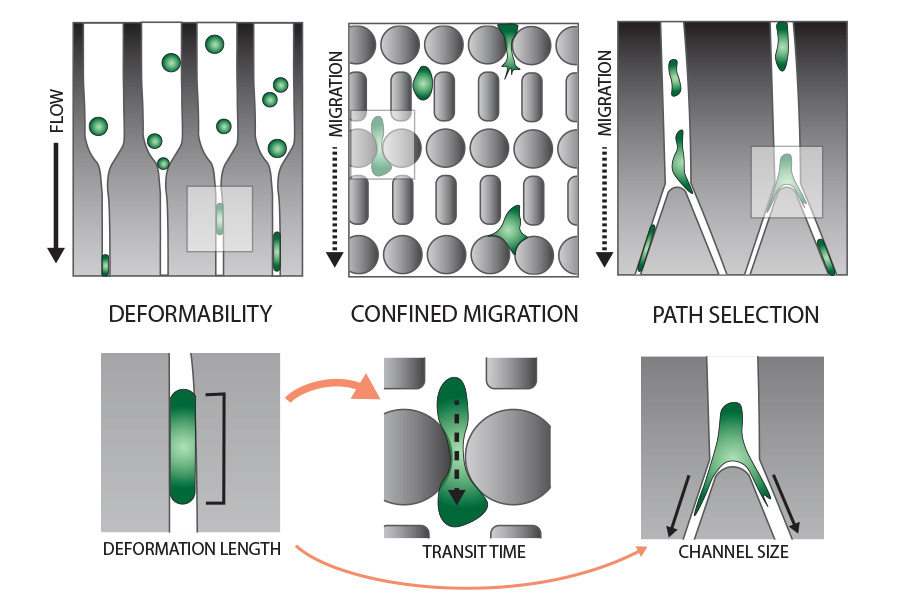Fibrosarcoma cells were found to be more flexible than melanoma cells, but their behavioral differences don’t alter their respective movements.
From the Journal: Biomicrofluidics

WASHINGTON, Nov. 18, 2025 — Aggressive cancer cells are masters of movement. When they spread through the body, they cause metastasis, which significantly reduces a person’s chance of survival. For this spreading to take place, they can switch between different cell states — behaviors of cells — that move with different strategies.
A previous study revealed two specific metastatic cancer lines — MV3 (melanoma) and HT1080 (fibrosarcoma) — are capable of making a similar switch when the gaps in tissue are very tight. However, the study found that only one of the cell lines did so by switching motility modes in response to tissue gap size and did not explain how the other achieved the same switch.
In Biomicrofluidics, by AIP Publishing, a team of researchers from the Delft University of Technology and the Kavli Institute of Nanoscience explored the mechanics at play that enable both cancer types to achieve the same result of movement, with only one doing so via tissue manipulation.
“We hypothesized that, whereas these melanoma cells can ‘muscle’ their way through tissue gaps, the fibrosarcoma cells are more flexible, or, deformable,” said author Anouk van der Net. “They can ‘shape-shift’ and contort themselves, which in fact makes them better at squeezing through very narrow tissue gaps.”
To test their theory, the researchers built a pair of special microfluidic devices, one to measure the deformability of both cell types and the other to see how fast the cells move through very narrow gaps. Results confirmed that the fibrosarcoma cells not only had greater deformability but also were better and faster at squeezing through narrow gaps.
In addition, the team tested if the cell type differences had any effect on the path the cells would select and found that both cell types made similar decisions when provided with different gap sizes. In other words, being more deformable indeed helps these fibrosarcoma cells get through small tissue gaps compared to the melanoma cells, but it does not affect the direction in which the cells move.
The research is among the first to reveal a direct link between cancer cell deformability and active migration through small gaps. With the context of the previous study, it shows the link can also be applied to invasion strategies in 3D.
“The study provided a better understanding how aggressive cancer cells spread to the body and how deformability is one of the determinants and most likely also determines when cancer cells switch between spreading strategies,” said van der Net. “These new insights also contribute to the development of therapeutics and diagnostics in which the mechanical properties of cancer cells [can be] measured for predicting treatment efficiency or patient prognosis.”
###
Article Title
Authors
A. van der Net, R. C. Boot, I. van Dijk, J.P. Conboy, P.E. Boukany, and G.H. Koenderink
Author Affiliations
Delft University of Technology and Kavli Institute of Nanoscience
